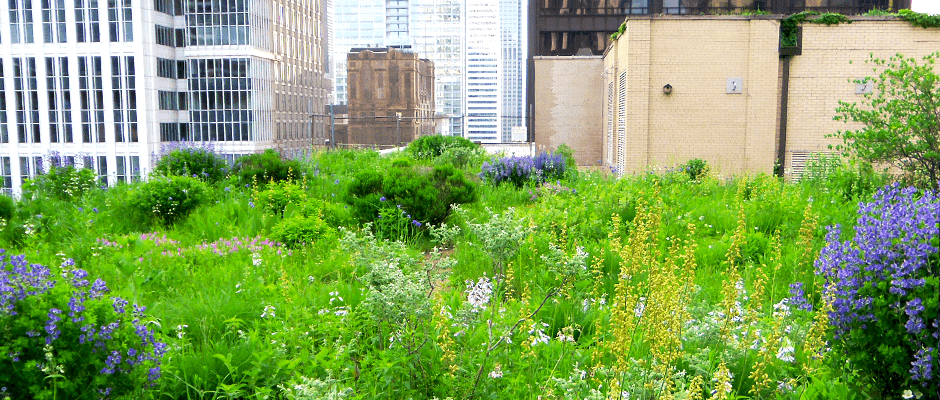Share this article
Green Roofs Offer a Taste of Home for Birds in Cities
Apart from the usual green spaces, it appears that city birds also appreciate landscaped roofs.
A recent study published in the Wildlife Society Bulletin shows how green roofs — tops of buildings partially or completely covered with vegetation — may contribute to habitat for a subset of birds that already occur in urbanized landscapes. “Green roofs can be used as a strategy to increase abundance and diversity of native species throughout urban areas if that is the goal of the local community,” said Carly Eakin, the lead author of the study who worked on the study as a graduate researcher at Michigan State University.
Eakin and her team conducted point-count surveys at 12 green roof study locations in the midwestern United States during the bird breeding season in 2010 and 2011. They surveyed birds on building rooftops as well as along the area surrounding the buildings and used that data to estimate the probability of occurrence of the different bird species as well as species richness across roofs. “In general there were way more species and individual birds than we had anticipated,” Eakin said.
She even observed white-throated sparrows (Zonotrichia albicollis) on top of a 15-story-high building in Chicago, where eight of the roof study sights were located and warblers and a house wren (Troglodytes aedon) atop Chicago’s 11-story City Hall building, which is adorned with native herbaceous vegetation and shrubs, such as New Jersey Tea (Ceanothus americanus), Cockspur Hawthorn (Crataegus crusgalli), and Purple Coneflower (Echinacea purpurea), which provide a diversity of vegetation structure.
The team found that most species observed on the green roofs were also found in surrounding landscapes, but species richness was not as high on green roofs as on the surrounding landscapes. Still, of the 30 bird species that the researchers detected on the roofs, 26 were noninvasive, native birds and of those, a vast majority were not birds typically found in urban areas. “There was quite a species richness overall,” Eakin said. “Even if the birds are not super rare, there’s still conservation importance in that they’re native species.”
Roof size also seemed to play an important role in abundance of birds and species richness, Eakin said. For the most part, larger roofs had a greater diversity of species with the exception of one study area that was a large roof with very little vegetation diversity.
Eakin said further research can help determine whether bigger roofs are always better for birds to use as habitat in cities, or if smaller green roofs in close proximity to one another can also help with their conservation.
Header Image: Eight native bird species were observed using the variety of native plant species atop Chicago City Hall, which is 11-stories above the ground. Image Credit: Carly Eakin








